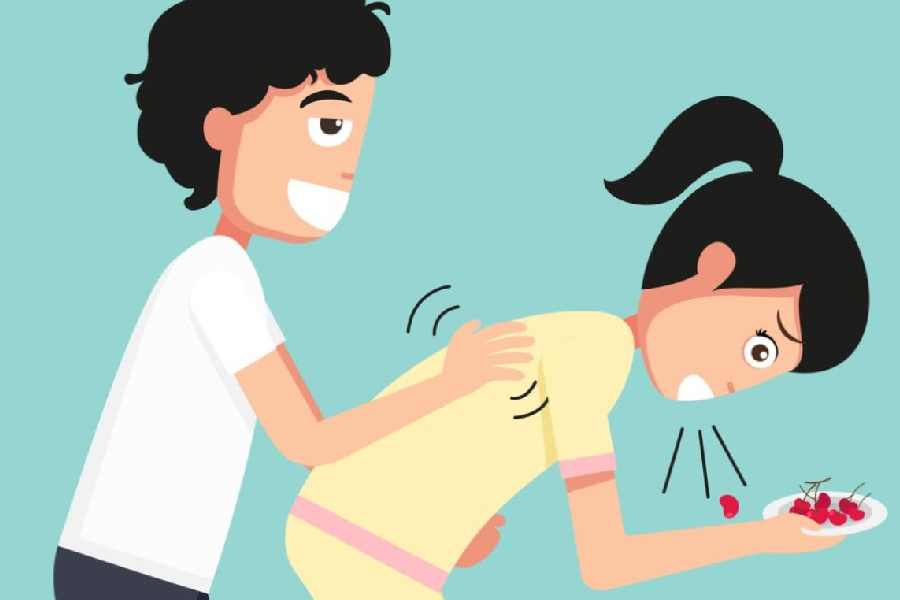Sudden choking can be a common, frightening and fatal emergency. People need to be trained to handle it, but most of the time, bystanders do not know what to do.
Why exactly does choking occur?
Choking occurs because eating and breathing occur through a common entrance from the back of the mouth. It leads to the lungs and the stomach. As we eat, the entry to the lungs is blocked by a flap called theepi glottis. Air goes into the lungs, and food into the stomach.
Malfunctions can occur if people try to talk while eating, eat too much at a time or swallow too fast. It is more likely if they have consumed alcohol or other street drugs or are on sedative medication. Sometimes they may have eaten bones, ingested large mouthfuls or tried to talk while eating. The epiglottis does not close fully, and food goes down into the windpipe instead of the stomach. It then gets stuck there. As a result, the person cannot breathe.
The air and oxygen supply get cut off. In six minutes, brain damage occurs, and in 10 minutes, death can occur. Any action, therefore, has to be swift and efficient.
Children are curious. As the mouth is one of the body’s most sensitive areas, they try to put everything into their mouths to feel the texture. This may be buttons, marbles, pins, or nuts and bolts. It may be hard candy or toffees given as a treat. Sometimes, they are given nuts, especially peanuts. These are choking hazards. These should be placed in a blender first so that the nuts are broken and no longer dangerous.
We are meant to eat our food in the upright position. Sometimes the caregiver is in a hurry, so they put large amounts of food into the child’s mouth. They try to put in the next mouthful even before the child can swallow. To tackle a fussy or slow eater, parents sometimes make the child lie down and then try to force feed in the supine position.
Sometimes, we pass on old toys or clothes to friends and relatives. The problem is that the toys and clothes may have extra fittings which may have become loose over the years. These can come off in the mouth and choke the child.
As adults choke, they point to the throat, cough, wheeze and gag. The person may become unconscious and turn blue. The signs may not be so obvious in children. It may be too late by the time bystanders are aware.
If you see a person choking, you should immediately perform first aid. The ambulance services, when summoned, may be delayed and ould be futile.
Here are the steps:
Stand behind the person, wrap your arms around them make a fist. Angulate the person so that the head is down. If required, bend them over a chair. Press hard in the area bet-ween the umbilicus and the ribs. This is an abdominal thrust. Do this five times. This will usually force the object to come out. If this does not work, go behind the person, and bend the person over at the waist to face the ground but not lie flat. Strike five separate times between the person’s shoulder blades with the heel of your hand. Follow it by giving five abdominal thrusts.
Alone in the house and choking?
Then you can perform these manoeuvres on yourself. Bend over a chair and perform five abdominal thrusts with your hands. If this does not help, and the object is not dislodged, get into a plank position balanced on only the hands and toes of the feet. Drop yourself flat on the bare ground suddenly and vigorously with an abrupt movement. This usually works.
The writer has a family practice at Vellore and is the author of Staying Healthy in Modern India. If you have any questions on health issues please write to yourhealthgm@yahoo.co.in










